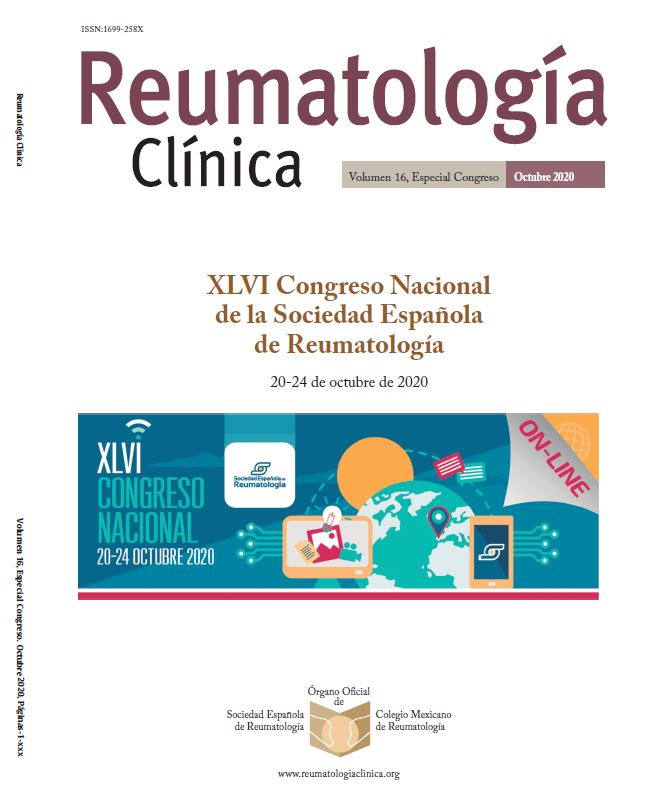P022 - Can the HUPI be more useful than other indices in the search of biomarkers for RA?
1Hospital de La Princesa. Madrid. 2Hospital La Fe. Valencia. 3Hospital San Carlos. Madrid. 4Hospital Gregorio Marañón. Madrid. 5InMusc. Madrid.
Introduction: The Hospital Universitario La Princesa Index (HUPI) was developed to tackle metric shortcomings of DAS28 and SDAI, and has shown better accuracy and responsiveness than these widespread indices.
Objectives: To compare the performance of HUPI, DAS28, and SDAI in explaining the variability of radiographic progression, HAQ and the distribution of a biomarker of damage such as IL6.
Methods: Two cohorts were assembled with data from a clinical trial (ACT-RAY) and an early arthritis register (PEARL). Radiographic progression, measured as the change (Δ) of Genant or Sharp/Van der Heijde indices at week 52 in ACT-RAY and PEARL respectively, Δ HAQ and serum IL6 (R&D Systems) levels, the latter only available in PEARL, were the outcome variables. HUPI, DAS28, SDAI, sex and age were the independent variables. For each index, linear regression models adjusted for sex and age were developed using standardized variables. The overall performance of the model, as well as that of the specific index it included, were evaluated using the adjusted R2. Differences between models were assessed with the likelihood ratio test. Also, The fpfitci command (Stata v14) was used to estimate the predicted distribution of the described variables using fractional polynomials and plotting the resulting curves.
Results: The performance of the models and indices are shown in table 1. The variability of radiographic progression was better explained by the SDAI model in ACT-RAY whereas HUPI did it so in PEARL. The latter also performed better for explaining HAQ in ACT-RAY (table) and IL6. Sex modified the performance of DAS28 and SDAI in their respective models. The relation between all the described outcomes predicted using fractional polynomials and each index was also more linear for HUPI than its comparators.
|
Adjusted R2 of the models and indices |
|||||||
|
Outcome |
Index |
ACT-RAY |
LR |
PEARL |
LR |
||
|
R2m |
R2I |
R2m |
R2I |
||||
|
Radiographic progression |
HUPI |
0.025 |
0.024 |
ref |
0.110 |
0.020 |
ref |
|
DAS28 |
0.031 |
0.030 |
< 0.000 |
0.102 |
0.011 |
< 0.000 |
|
|
SDAI |
0.051 |
0.050 |
< 0.000 |
0.109 |
0.019 |
< 0.000 |
|
|
HAQ |
HUPI |
0.353 |
0.323 |
ref |
0.477 |
0.448 |
ref |
|
DAS28 |
0.329 |
0.298 |
< 0.000 |
0.472 |
0.442 |
< 0.000 |
|
|
SDAI |
0.334 |
0.303 |
< 0.000 |
0.486 |
0.457 |
< 0.000 |
|
|
IL6 |
HUPI |
- |
- |
- |
0.212 |
0.184 |
ref |
|
DAS28 |
- |
- |
- |
0.204 |
0.176 |
< 0.000 |
|
|
SDAI |
- |
- |
- |
0.201 |
0.172 |
< 0.000 |
|
|
R2m: adjusted R2of the models; R2I: adjusted R2 of the index included in the model; LR: Likelihood-Ratio test comparing HUPI models vs other indices. |
|||||||
Conclusions: Although all indices explained the outcomes’ variability similarly, HUPI did it better than DAS28 and SDAI for almost all outcomes except for Δ Genant in ACT-RAY and HAQ in PEARL.
References
- González-Alvaro I, et al. PLoS ONE. 14(4):e0214717.







